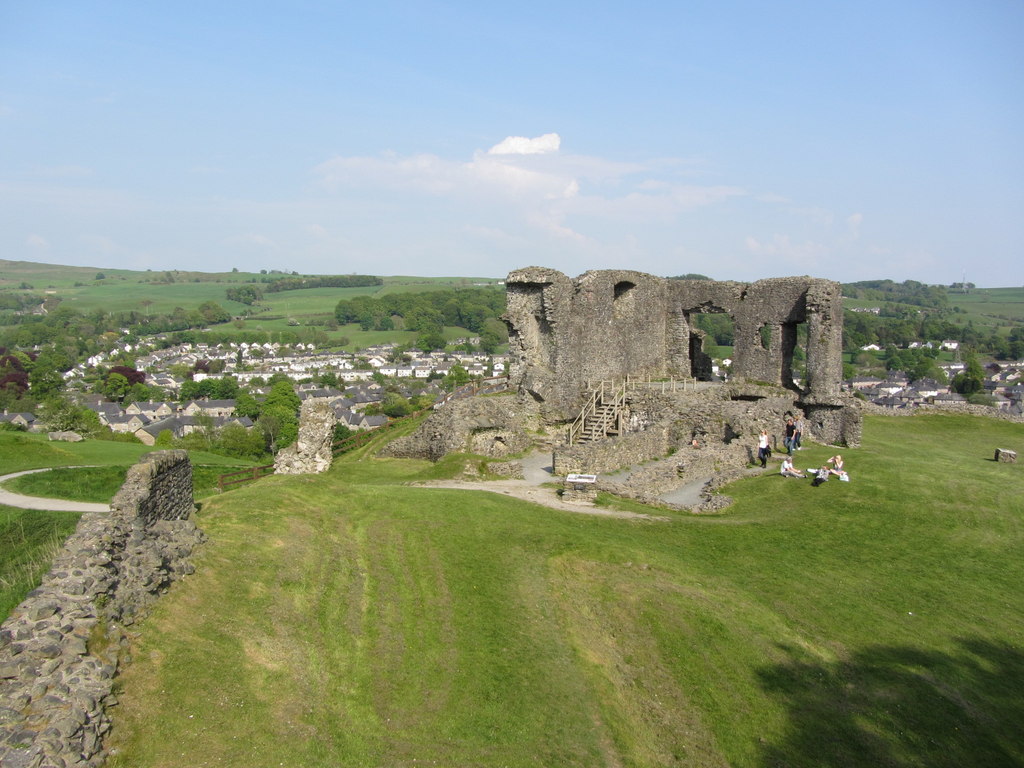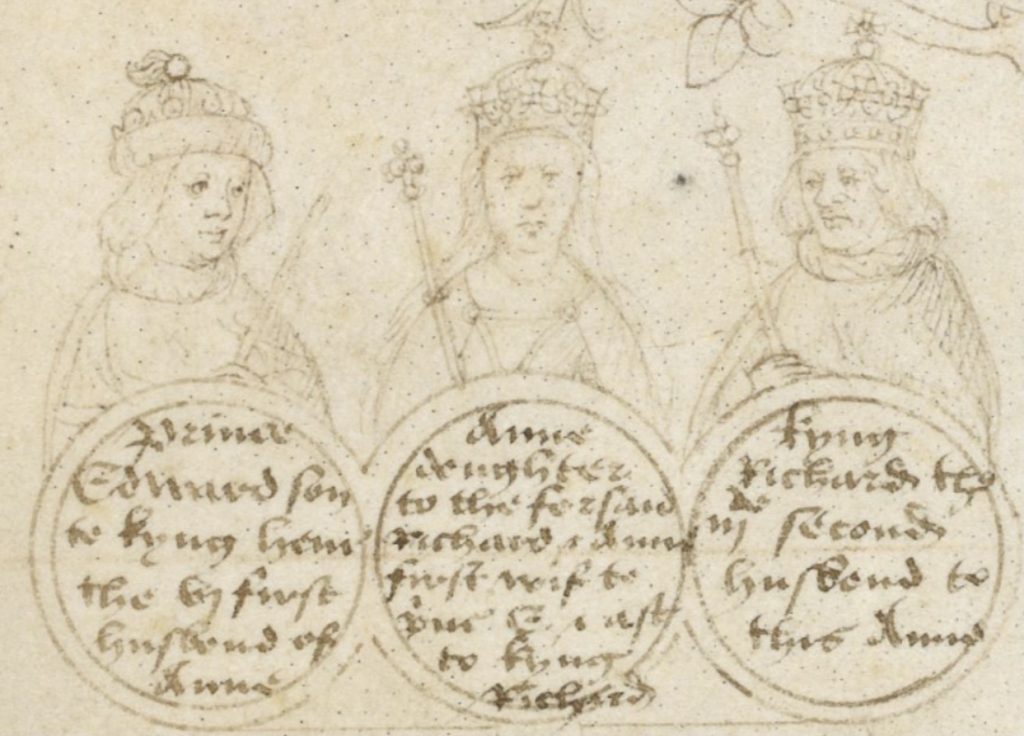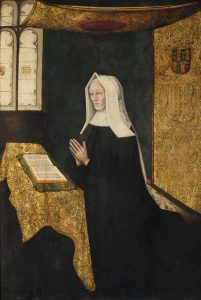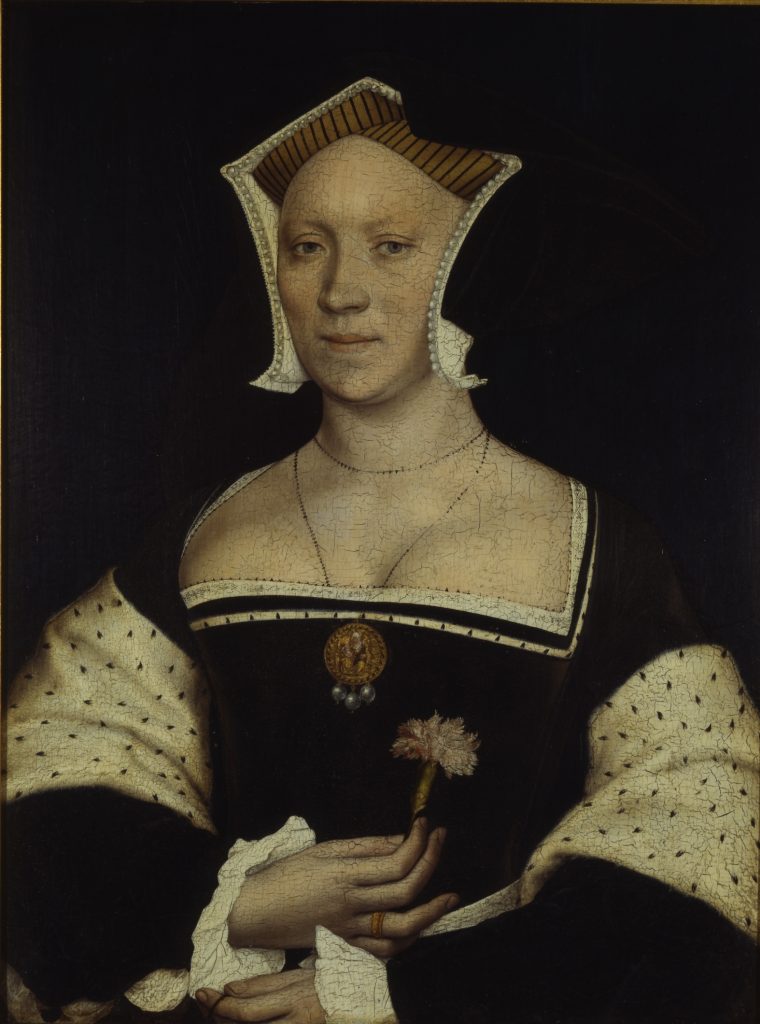The beginning of the Tudor era bore witness to two of its most formidable women, Elizabeth Fitzhugh (1462-c15051Horrox) and her daughter-in-law, Maud Green. Both were married at a young age to husbands that were far older, and both became widows whilst still in the early twenties.
In this first article we look at Elizabeth’s life and how the choice she made to remarry after becoming a widow had huge impacts for the Tudor dynasty.
An early marriage
Elizabeth’s father, Henry, 5th Baron Fitzhugh of Ravensworth (c1429-1472), had flip-flopped his way through the Wars of the Roses. Through his wife, Alice Neville, he was son-in-law of the earl of Salisbury, a staunch supporter of the House of York, but up until the Battle of Towton in 1461 he remained loyal to Henry VI and aligned himself with the House of Lancaster. With what then seemed the annihilation of the Lancastrian cause, Henry fell into line as a new Yorkist, but by 1468 he had flipped again. This time he sided with his brother-in-law, the ill-fated Richard Neville, earl of Warwick, when he rose in rebellion and attempted to restore Henry VI2Clark.
All of this added up to a rather disastrous run of fortune for the Fitzhugh family and so when an up-and-coming star of the Yorkist court came asking for a daughter’s hand in 1474, they saw it as a chance to rehabilitate their reputation in the eyes of Edward IV.
The Fitzhugh family, despite their recent fall from grace, were still one of the most important landowners in the north of England, with ties to some of the biggest families. Not only were the earls of Salisbury and Warwick family members, but through the marriage of Cecily Neville to the duke of York, so was Edward IV himself.

Sir William Parr of Kendal (1434 -1483) had once been a loyal retainer of the earl of Salisbury who had himself flirted with danger during Warwick’s rebellion, but had submitted to Edward IV shortly before the Battle of Barnet3Martienssen, p14, saving his family from disaster. He was now upwardly mobile and keen to forge a union with the rivals to his power around his homeland in Westmorland and Yorkshire.
It was against this backdrop that Elizabeth Fitzhugh turned 12, the legal age for a girl’s marriage. Her position as one of six daughters with five brothers meant that there was very little financial gain to be had from the union4Martienssen, p15, but Elizabeth’s lineage more than made up for that. For Parr it was the chance to marry into the king’s extended family, whilst for Elizabeth it was an opportunity to become the wife of one of the most important men at court. Not only was he the king’s servant, but also a close advisor and personal friend. He had gained substantial rewards in money, property and titles from his loyalty and at the time of the marriage sometime before June 14755Horrox he was Comptroller of the king’s household.
For them both, it was an opportunity too good to miss despite the fact that she was still too young to bear him an heir and he, at 40 years old, was only five years younger than her father.
Wife and mother

Elizabeth’s life now revolved around court where William was comptroller of Edward IV’s household from 1471 to 1475 and again from 14816Horrox. Her husband was well rewarded for his loyalty, receiving considerable grants of land and offices, acting as an executor of the king’s will in 1475, and being promoted to the Order of the Garter in 1474 as a mark of his position as one of Edward’s most trusted advisors and friends.
This life in the south was cut short sometime in 1475 when Parr’s younger brother John died and William returned to secure his northern powerbase. Over the next six years they mainly resided in Yorkshire where Elizabeth began to fulfil her duty as a wife, giving birth to their first child, Anne, in c1476 when Elizabeth was about 16. Whilst William began to develop his links with the king’s brother, Richard, duke of Gloucester, Elizabeth had four more children, including their heir, Thomas, in 1478. Within a few years, Parr was Gloucester’s lieutenant in the north whilst also acting as Edward’s emissary in his dealings with the Scots7Porter, p12.
Little is known of the family at this time, but Elizabeth would have been a frequent resident at the Parr’s ancestral home of Kendal Castle and would have had oversight of her children’s upbringing and education.
When Edward recalled Parr in 1481 his influence was as strong as ever. He returned to his post as Comptroller of the royal household and was appointed to the commission established to oversee the Office of Constable of England, making him one of the most important men in the country8James SWPII, p115, p12. When Edward suddenly died in 1483, it was Parr who was given the prestigious role of man of arms at the funeral and who, ‘… arrayed in full armour, save that his head was bare, and holding in his hand an axe, poll downward, rode up to the choir and, after alighting, was escorted into the church to make his offering…’.
In the political melee that followed Edward IV’s death, Parr saw his loyalties divided between the late king’s young son and heir, Edward V, and his northern patron, the duke of Gloucester. For a time Parr seems to have sided with Gloucester, at least when he took the royal of Lord Protector, but it is likely that he never fully reconciled himself to the usurpation. Instead of attending Richard III’s coronation on 26 June 1483, Parr resigned his position as Comptroller of the household and retreated back to his northern stronghold of Kendal9James SWPII, pp117-118.
This time Elizabeth did not accompany her husband northwards, but instead remained at court with her children and her mother, Alice Neville. As cousin of the new queen consort, Anne Neville, Elizabeth quickly became her lady-in-waiting, and she was in attendance at the coronation, receiving seven yards of gold cloth and silk ‘by the king’ special gift’. Aged just 21, she was still at court six months later when she received the news that William had died, leaving their five-year-old son as his heir.

Widowhood or remarrige?
How or where Elizabeth lived for the next two years is unknown, but it is likely that she remained at court with her young family under the protection of her cousin Queen Anne. Elizabeth’s mother had chosen to remain a widow after her husband died in 1472, and it is possible that Elizabeth had the same intention. There was a lot to be said for widowhood in medieval England. A woman became a legal non-entity at marriage (a feme covert) whereas a widow regained many of her legal rights as a feme sole (although they often had to fight to enforce them). Widows were entitled to a third share of their late husband’s estate for the rest of their life (known as a dower), as well as taking ownership of any land they had shared under a jointure10where the land was owned jointly and the surviving partner would inherit it agreement.

For some women, widowhood provided the financial security of a marriage without the need for a man. As a widow in the Queen’s household, Elizabeth might very well have enjoyed the financial and legal freedom she now found herself in.
But on 16 March 1485 Anne died, throwing Elizabeth’s life into turmoil once more. Worse was to come. On 22 August 1485, Richard III was defeated at the Battle of Bosworth Field and Henry Tudor assumed the throne as Henry VII.
Elizabeth found herself in a dangerous position. She was the widow of a man who had served both Edward and Richard loyally against the Lancastrian cause and whose son owed much of his inheritance to that service. She, herself, had been part of the Ricardian regime as his wife’s lady-in-waiting. It was only the fact that Thomas’ young age had prevented him from fighting with Richard III that saved them from being attained. But the 7-year-old head of the household was hardly in a position to protect his family from the upheaval that was about to follow.
What Elizabeth did now is a testament to her character.
Sometime in the 1470s or 80s, Elizabeth developed a friendship with Margaret Beaufort, dowager Countess of Richmond who was now the new king’s mother. They shared an interest in the emerging New Learning11Martienssen, p4 and the Countess’ fourth husband, Lord Stanley had been a close advisor to Edward IV at the same time as William Parr. As was common for the time, she had fostered several wards in her household, including Nicholas (c1460-1523) and Joan Vaux, the children of an attained Lancastrian knight killed at the Battle of Tewksbury in 147112JamesCP, p15. Their mother was the loyal lady-in-waiting of Queen Margaret of Anjou, who chose imprisonment and then exile with her mistress, leaving the children in the care of the widow of Henry VI’s step-brother.
As a close friend of Margaret, it is likely that Elizabeth met Nicholas whilst still married to William. He was the same age as her, intelligent, cultured and brave, and in the aftermath of Bosworth, he offered her the perfect solution to her problems. His position as Margaret’s protégé meant that he was in full favour with the new regime with his service at Bosworth being rewarded by the cancellation of his father’s attainder and his lands and rights restored.

Whatever Elizabeth’s previous thoughts on widowhood were, she now put them aside for the good of her family. As a minority heir Thomas was at risk of being taken from her care by an avaricious noble intent on marrying him to his daughter and absorbing his inheritance.
She and Nicholas were married sometime between August and December 1485 and Elizabeth moved her young family south to her new husband’s estates in Harrowden, Northamptonshire. It would begin the transition of the Parr affiliation from northern England to the south, and the family would never again permanently reside in Kendal. She would have three daughters with Nicholas: Catherine, Alice and Anne.
What impact did Elizabeth's choice have on the future of the family?

Vaux was a highly decorated soldier and was knighted by Henry VII for his service at the Battle of Stoke in 1487, and in putting down the Cornish Rebellion in 1497.The Parrs were part of an extended family of loyal Tudor men who, although not amply rewarded by the notoriously tight-fisted Henry VII, was at least safe from the implications of Yorkist sentiment.
Thomas was also benefiting from his proximity to the King’s Mother who probably inducted him into her educational institution in Colyweston in Northamptonshire13James CP, p25; Porter, p16. Here he was introduced to the humanist learning that so interested Margaret and Elizabeth and he became fluent in Latin, Greek and possibly French. His interest in scholarship would last the rest of his life and lay the foundation for his own children’s education14James CP, p26, including that of his daughter, Queen Katherine Parr.
By the time he came fully into his inheritance in 1499, Thomas Parr was a fully-fledged Tudor gentleman, charming, sophisticated, energetic and intellectual. What’s more, by 1508 he was a close friend of the young Henry, Prince of Wales. Elizabeth died in c1505 and although she did not live to see her son reap the rewards, she had ensured that the next generation of Parrs would remain at the forefront of royal patronage.
But her impact extended far beyond her son. Although she never knew her granddaughter, Katherine Parr was inspired by the example she set. Like her grandmother and mother (who we’ll discuss in the next article) she was independent with humanist leanings and a deep understanding of self-sacrifice. She would also be an inspiration to her young stepdaughter, Elizabeth I.
Other Tudor women: two of Elizabeth Fitzhugh's granddaughters
No picture of Elizabeth survives, but below are portraits of two of her granddaughters.
Elizabeth Cheyne (1505-1556), daughter of Anne Parr. She married Sir Nicholas Vaux’s son by his second marriage and became Lady Vaux as her grandmother had been.
Queen Katherine Parr was the daughter of her eldest son, Thomas Parr. Her third husband was Henry VIII.


Further Reading
Clark, K. (retrieved 12 August 2022) The Lost Years of Henry Fitzhugh
Ford, L. L. (retrieved 11 August 2022). Vaux, Nicholas, first Baron Vaux, Oxford Dictionary of National Biography https://doi.org/10.1093/ref:odnb/28162
Friedrichs, R. L. (2006) The Remarriage of Elite Widows in the Later Middle Ages. https://journals.lib.unb.ca/index.php/flor/article/download/12530/20155/24285
Horrox, R. (retrieved 11 August 2022). Parr, Sir William, Oxford Dictionary of National Biography https://doi.org/10.1093/ref:odnb/21404
James, S.E. (2009). Catherine Parr: Henry VIII’s last love. Stroud.
James, S.E. (1994). Sir William Parr of Kendal: Part II, 1471-1483. Transactions of the Cumberland & Westmorland Antiquarian & Archaeological Society 94 (series 2) pp105-120 https://doi.org/10.5284/1061498
Martienssen, A. K. (1974). Queen Katherine Parr. McGraw-Hill.
Porter, L. (2011). Katherine the Queen: the remarkable life of Katherine Parr, the last wife of Henry VIII. St Martin’s Griffin.